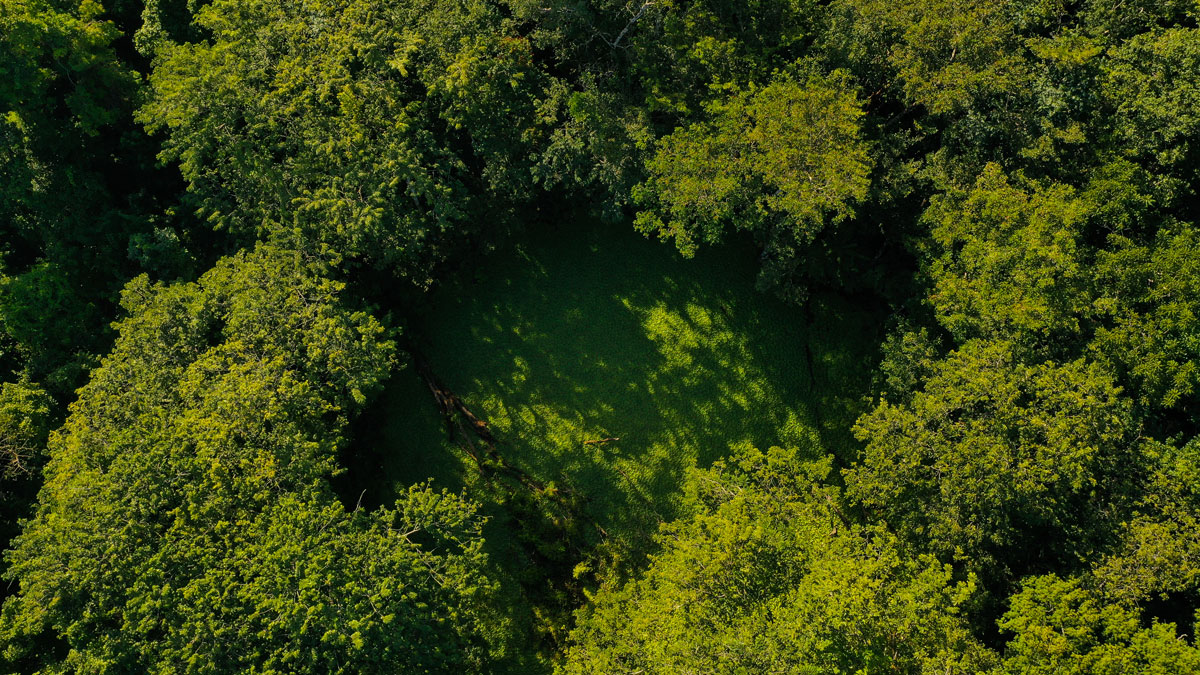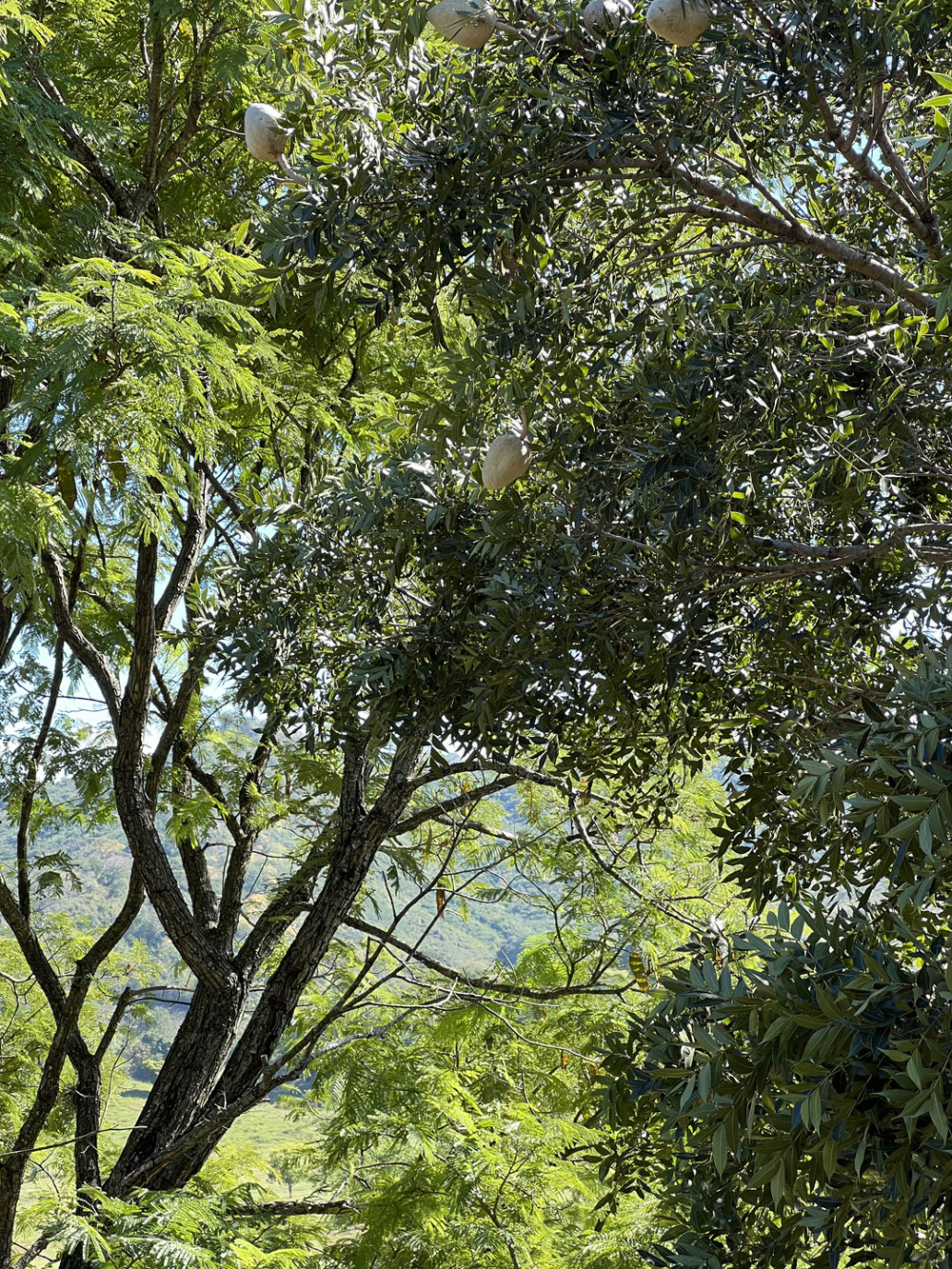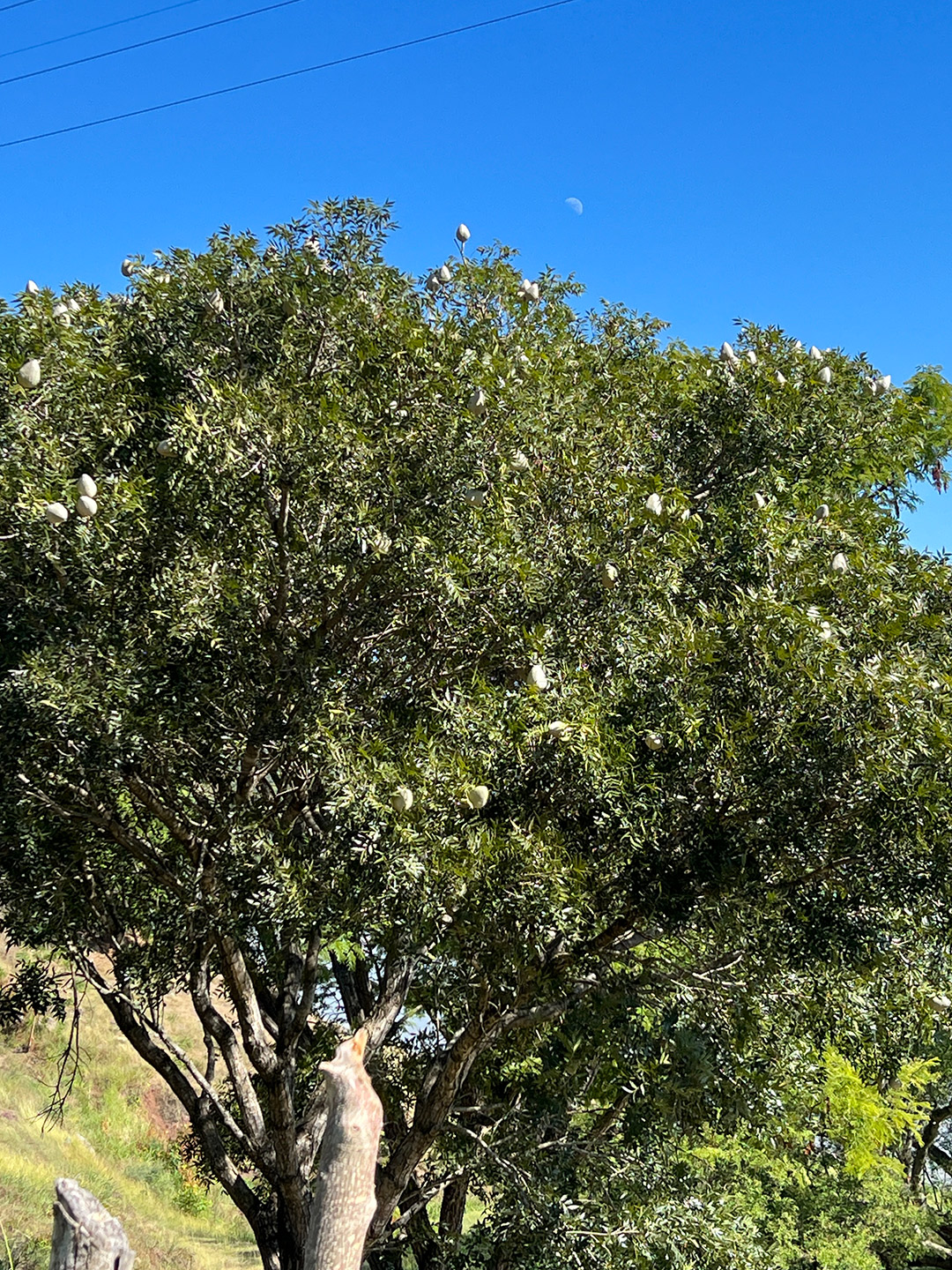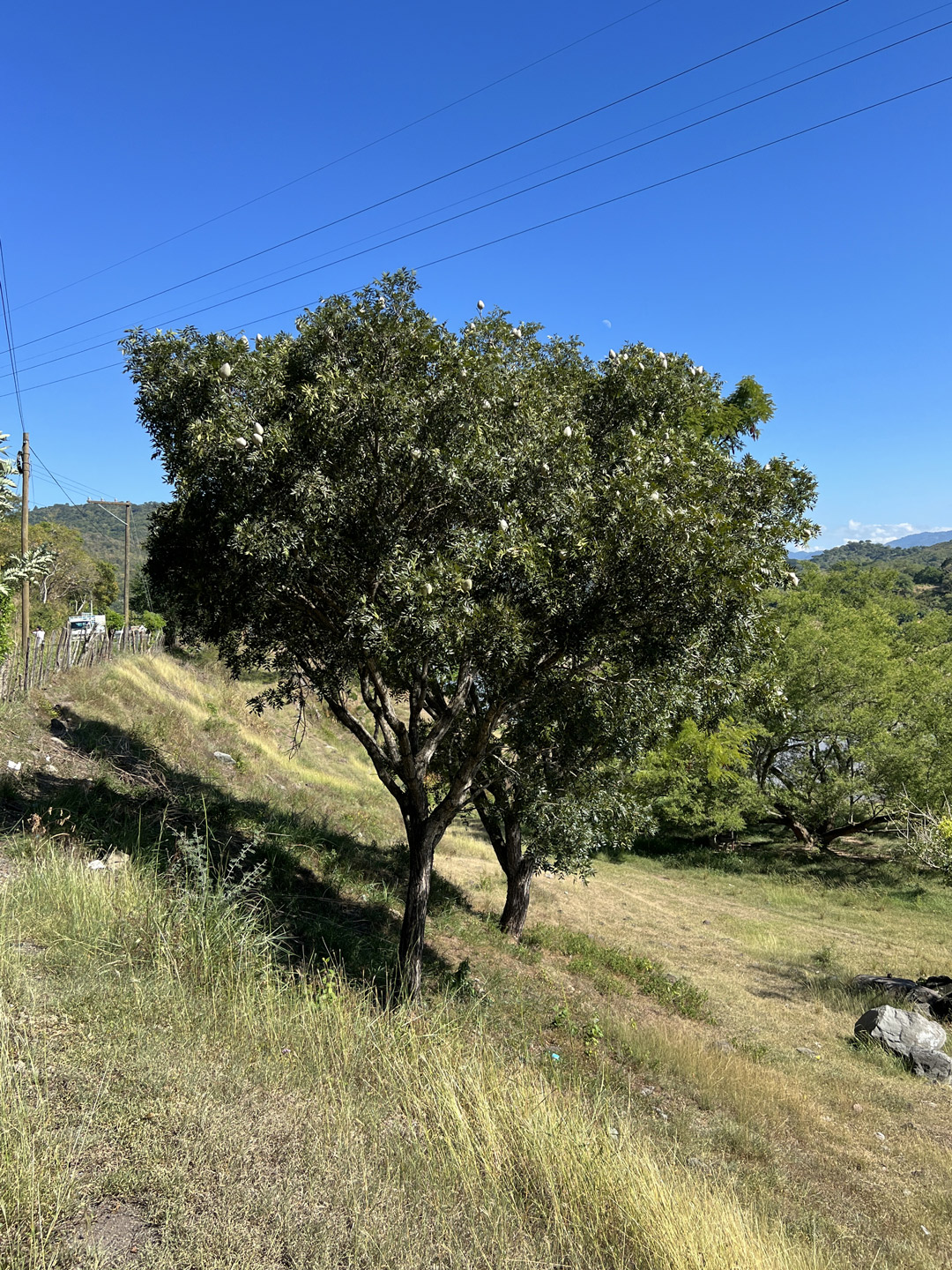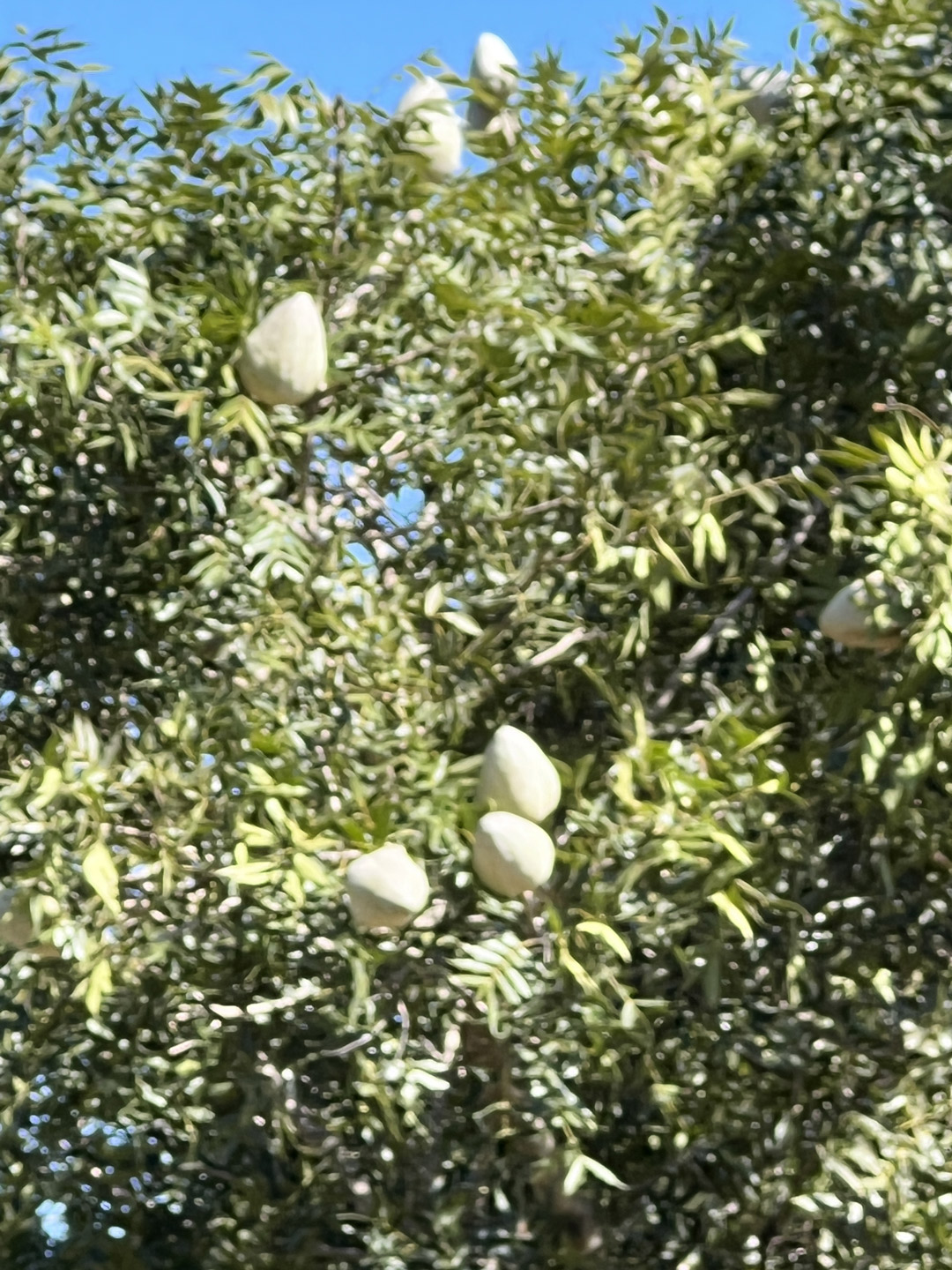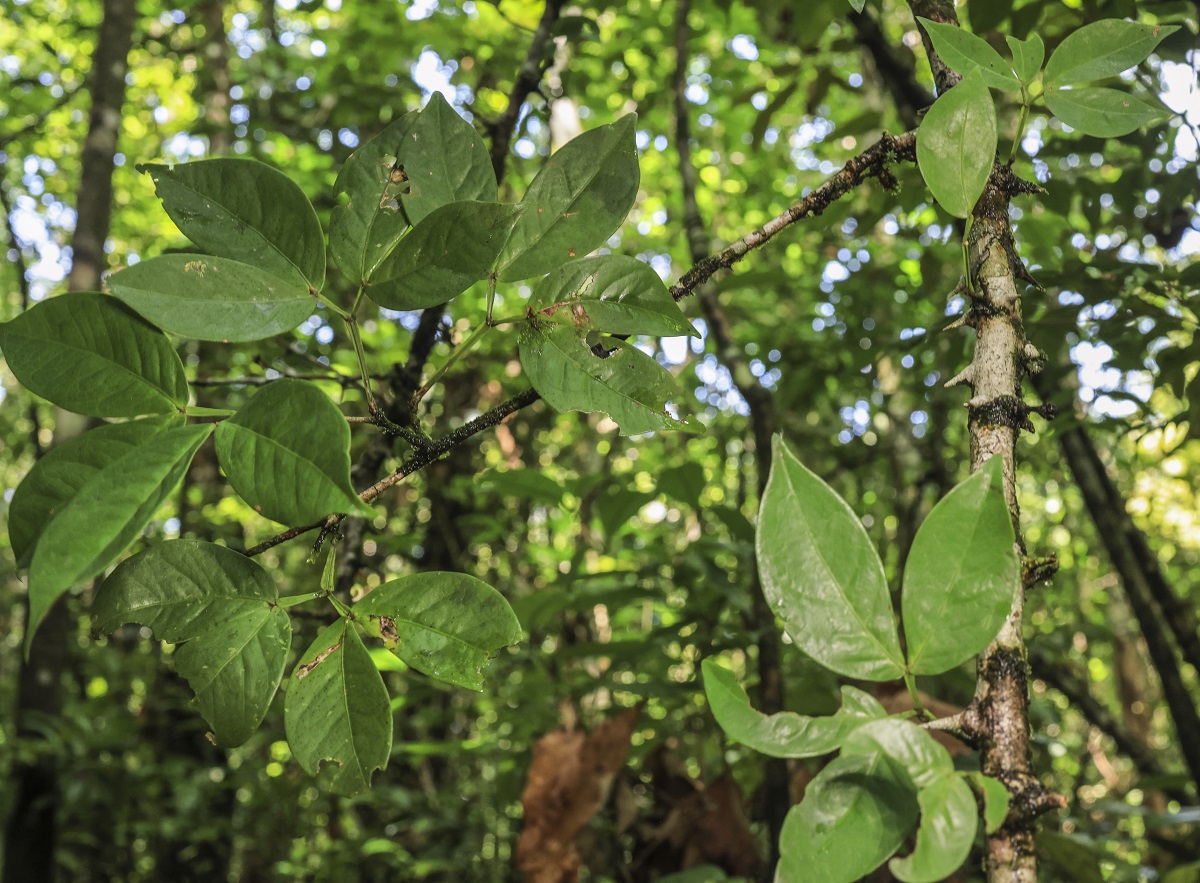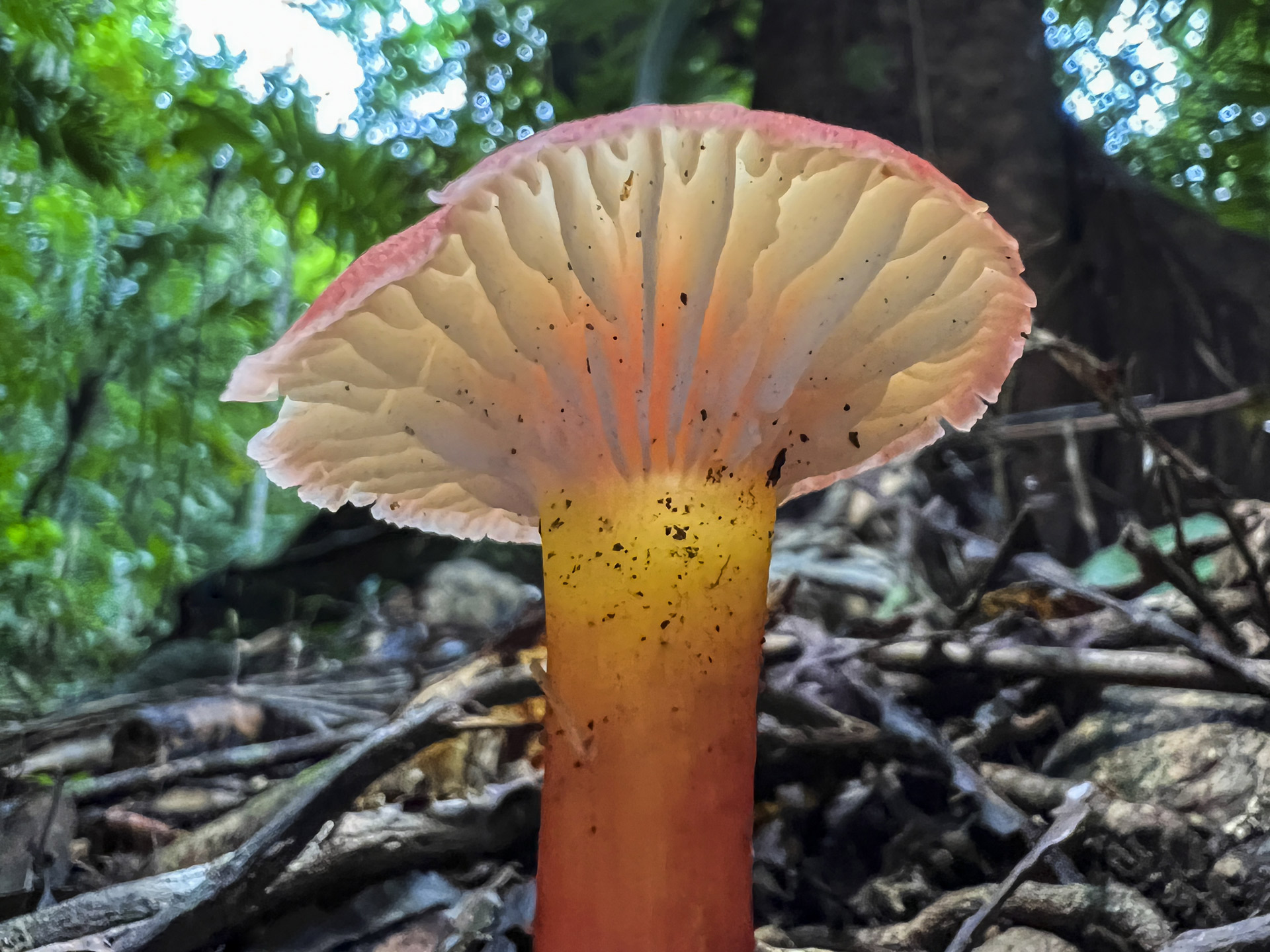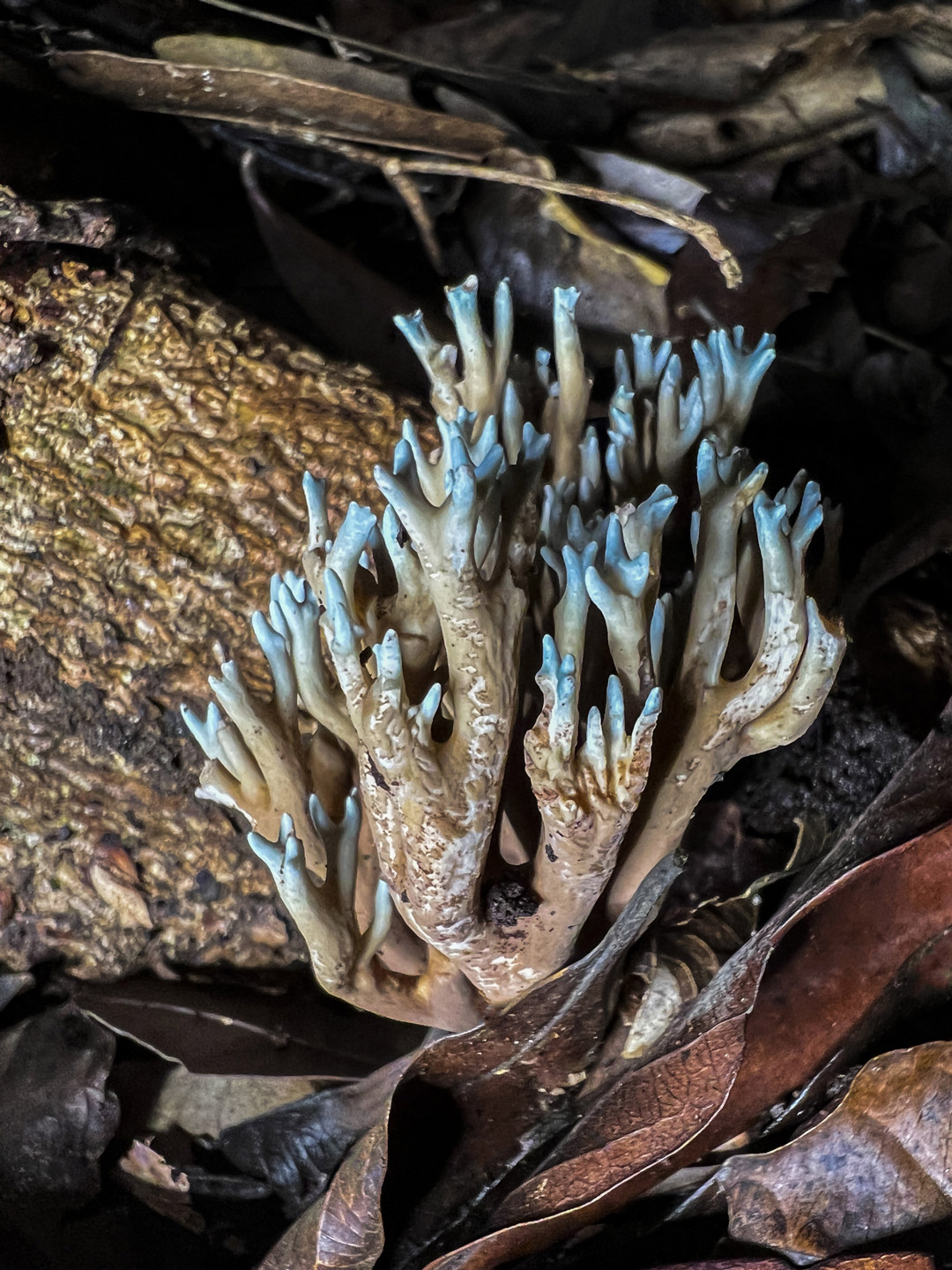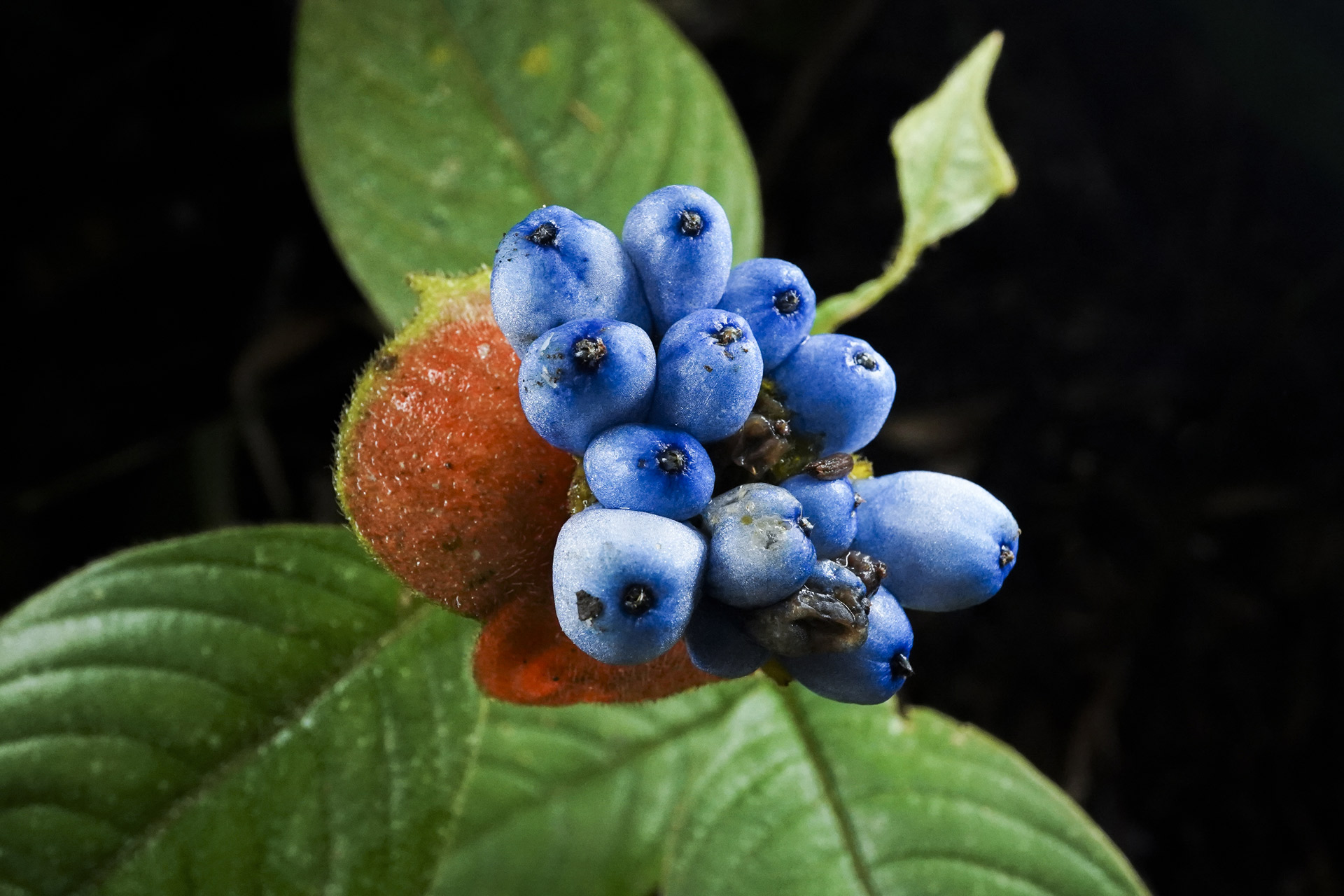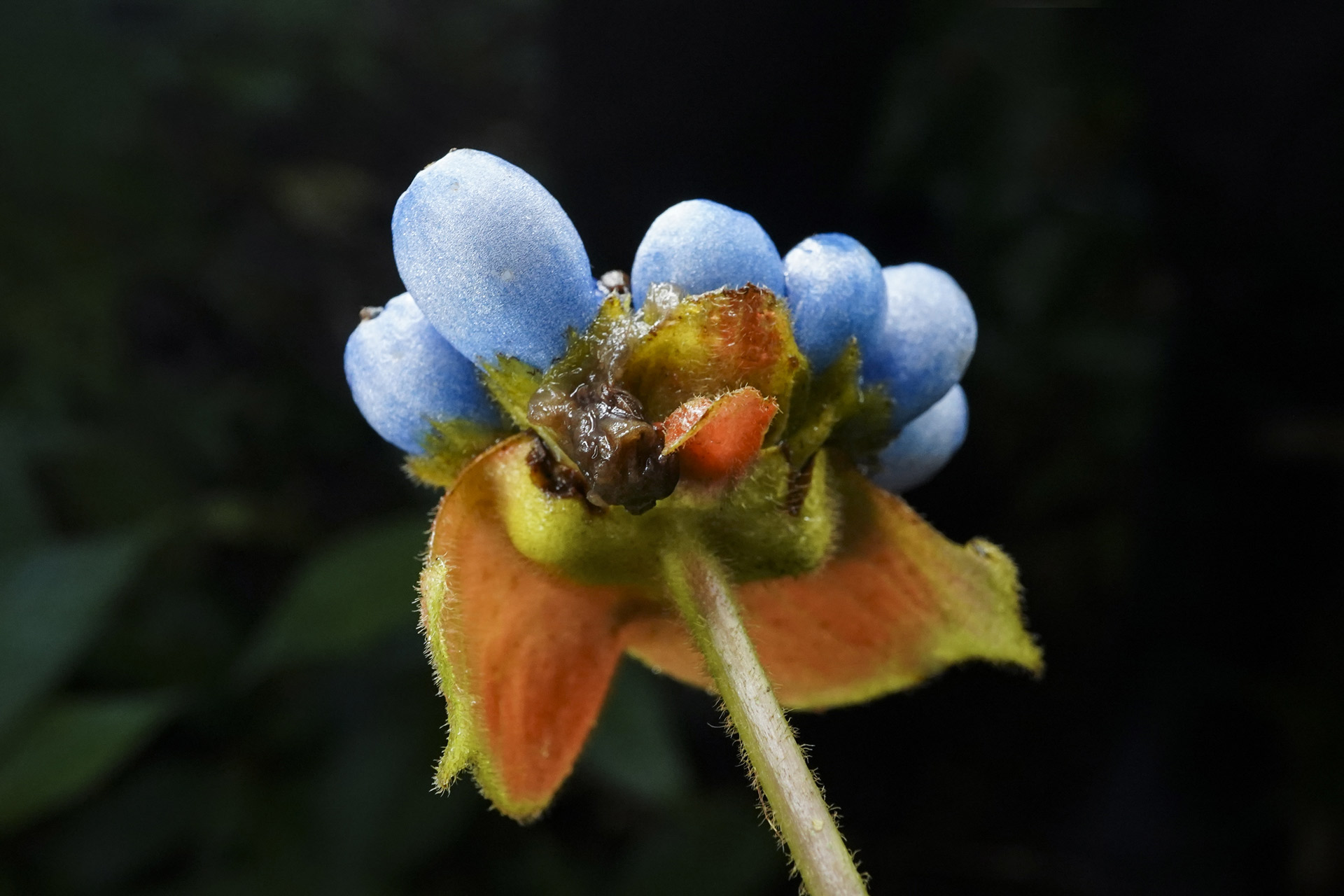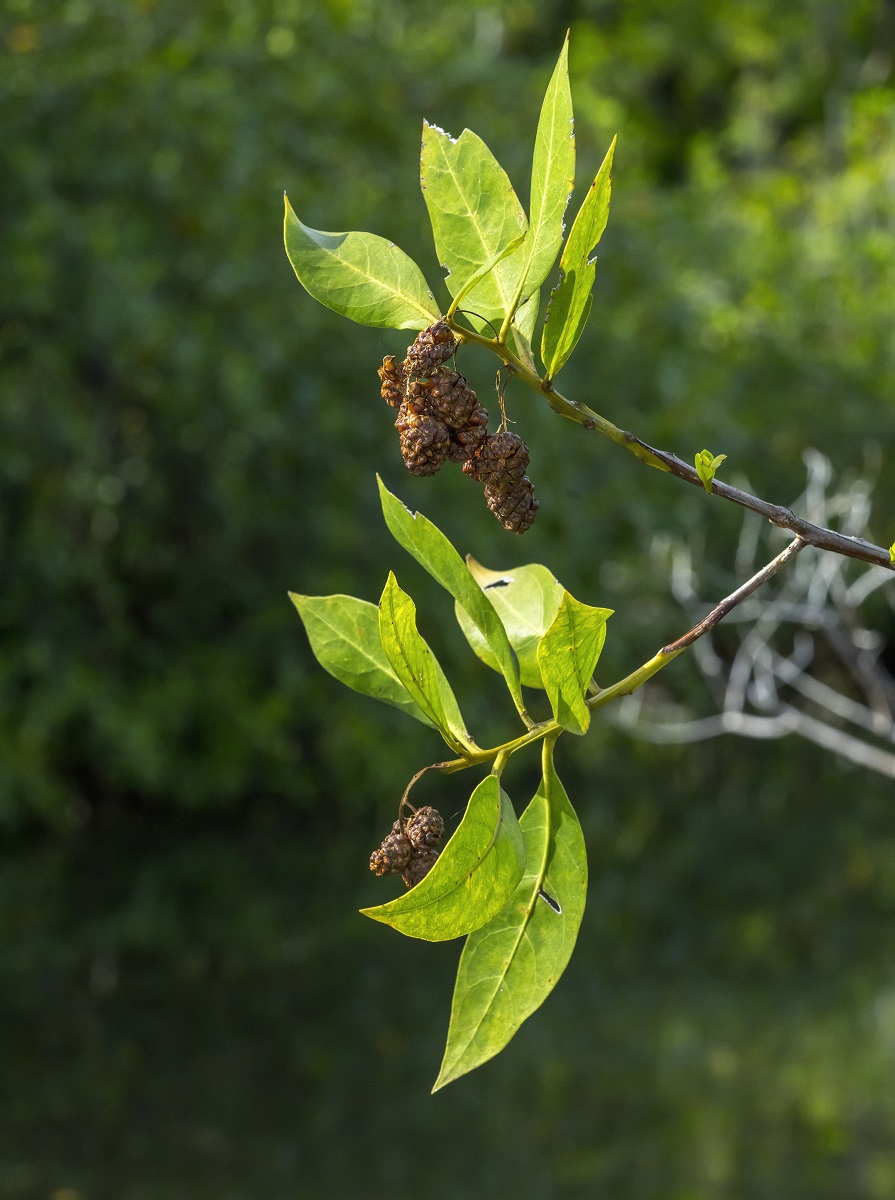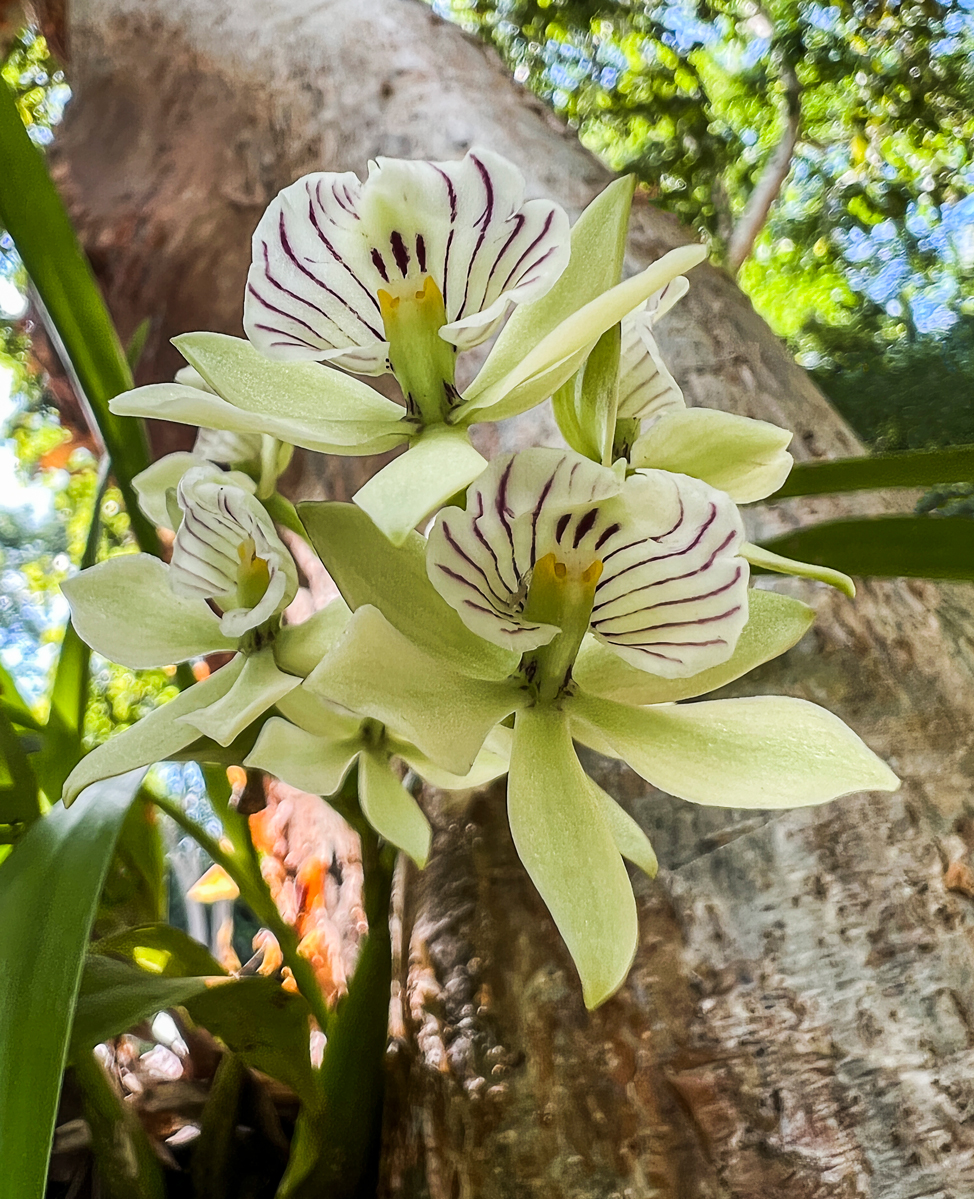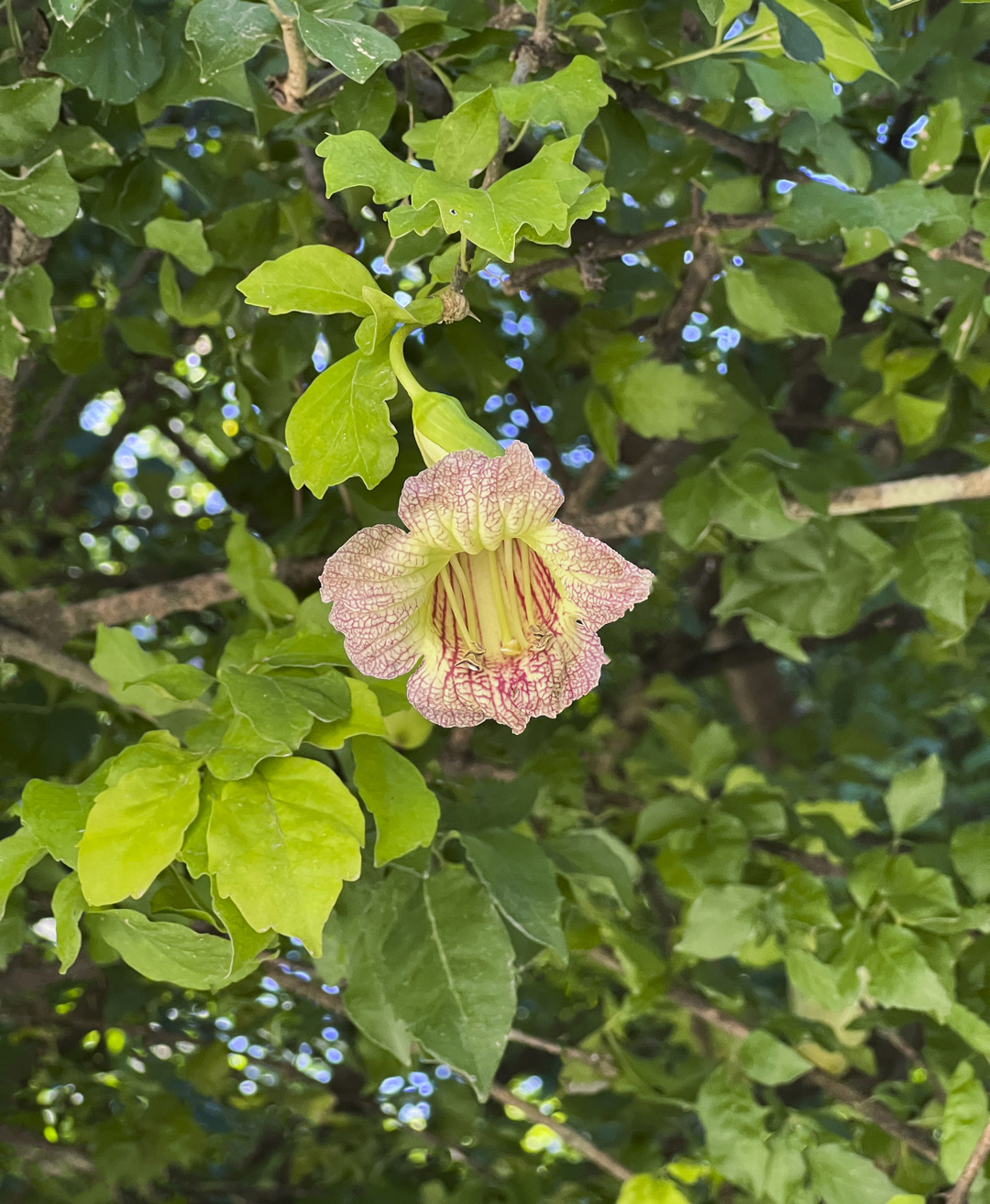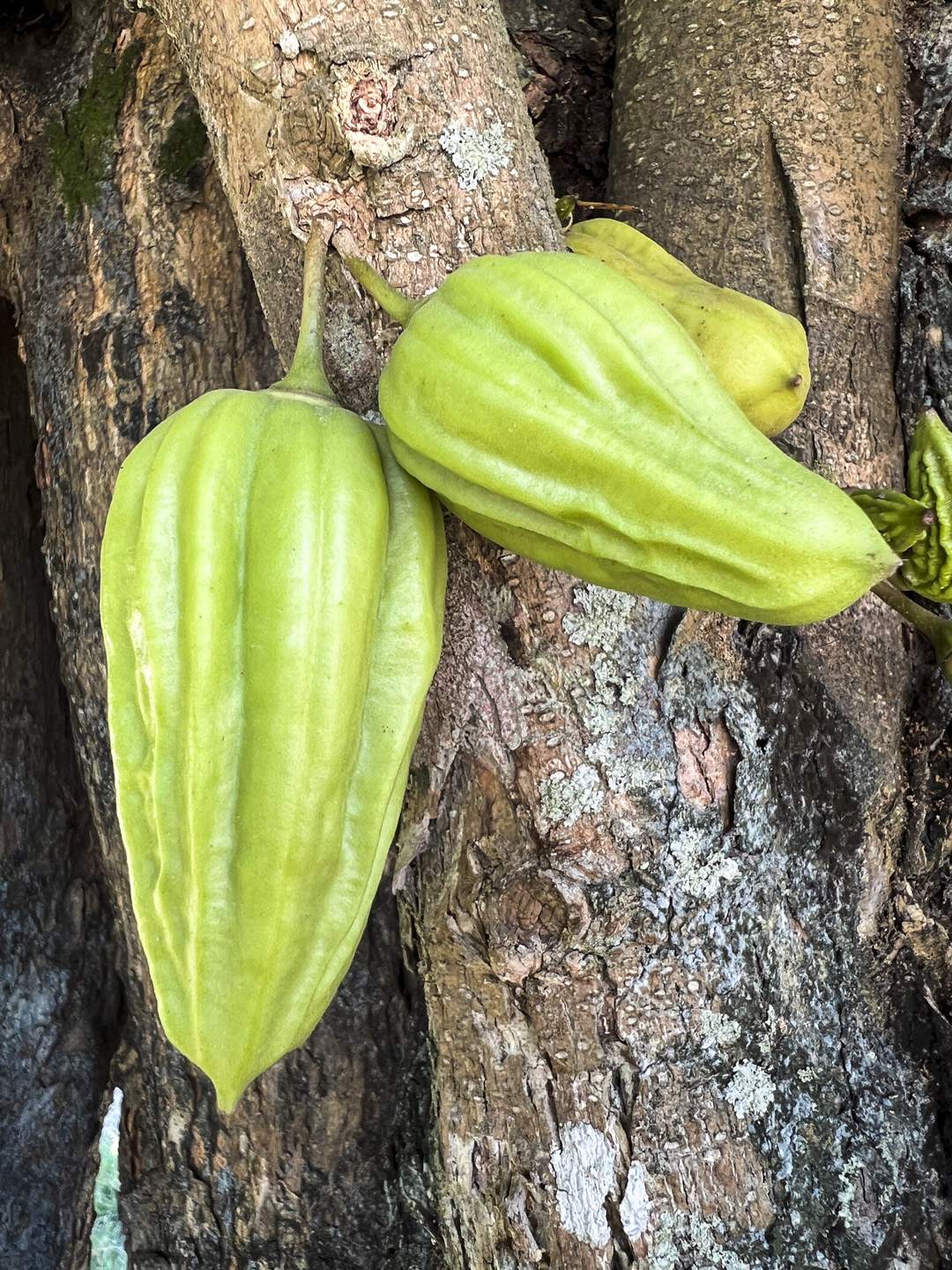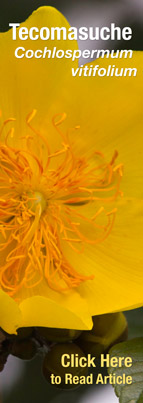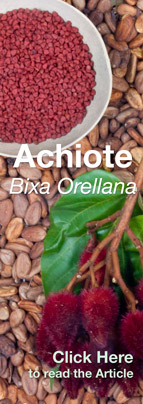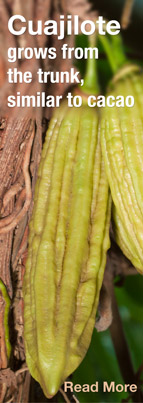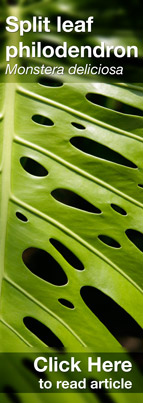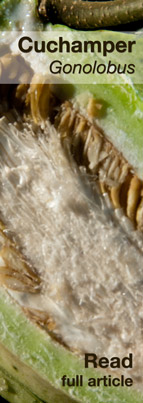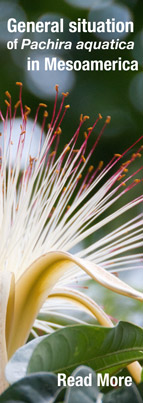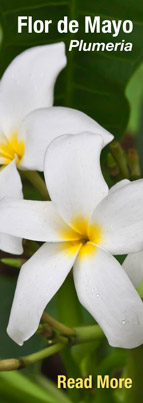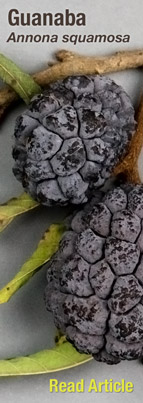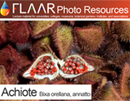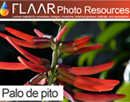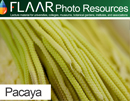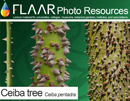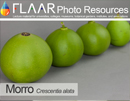When time and funding permit, each flower (each plant species) will have its own page, and its own PDF, and eventually its own PPT so that professors and students have plenty of material on Guatemala (and Honduras, etc) to study.
Heliconia adflexa, Coban, Guatemala, Hotel Monja Blanca, FLAAR, by Nicholas Hellmuth
This space is for flowers
we have recently found and photographed.
|
| Share
|
|
|
Water bodies in the Biotopo Protegido San Miguel La Palotada El Zotz
Posted March 10, 2022
Very close to the Zotz camp you can find a watering hole in the southern part. The aquatic plants that prevail are the Lechuguilla de agua (Pistia stratiotis); Lentejas de agua (Lemna sp.) and (Salvinia sp.) lettuce had a very small white flower.
Everything together creates a very beautiful landscape. On the shore you can see a Zapotón, Pachira aquatica, which we have photographed in large numbers in the Municipality of Livingston, but you can hardly see it in Petén.
At least an hour by car from the first camp of the biotope you can reach the entrance of another of the watering holes of this site, in which if you are lucky you can see crocodiles (Crocodylus moreletii). Then you can go to the Laguna El Palmar, which is a bit complicated to observe, since there is a lot of vegetation growing around it. The team is prepared so we have a ladder which allowed us to have a better view of the place.
According to SIGAP (s.f.) “On the shore of the El Palmar lagoon the oldest occupation was found, where small human groups took advantage of the abundance of natural resources. For more than 900 years they developed their settlement, with an Astronomical Commemoration Complex and a Triadic group, both decorated with masks. In the year 100 A.D. the political headquarters moved to the top of the limestone escarpment, in search of defensive spaces.”
Written by Vivian Hurtado & Roxana Leal
Identified Species by Victor Mendoza
|
|
Documentation tour of the Río Ixtinto
Posted March 4, 2022
In February we documented species in Río Ixtinto, within the Parque Nacional Yaxha, Nakum y Naranjo. Our main objective was to photograph the blooms of Palo de Tinto or Palo de Campeche (Haematoxylum campechianum). This tree is native to the Yucatan Peninsula in Mexico, Guatemala, and Belize. It was an important source for extracting red, blue and black dyes, but in addition to its dye use, it is also used for restoration, forage, firewood, ornamental planting and it is a honey species (Red de Viveros de Biodiversidad, s.f.).
Taxonomy:
Domain |
Eukaryota |
Kingdom |
Plantae |
Phylum |
Spermatophyta |
Subphylum |
Angiospermae |
Class |
Dicotyledonae |
Order |
Fabales |
Family |
Fabaceae |
Subfamily |
Caesalpinioideae |
Genus |
Haematoxylum laceolatum |
Species |
Haematoxylum campechianum laceolatum |
|
Source: CABI, n.d. | |
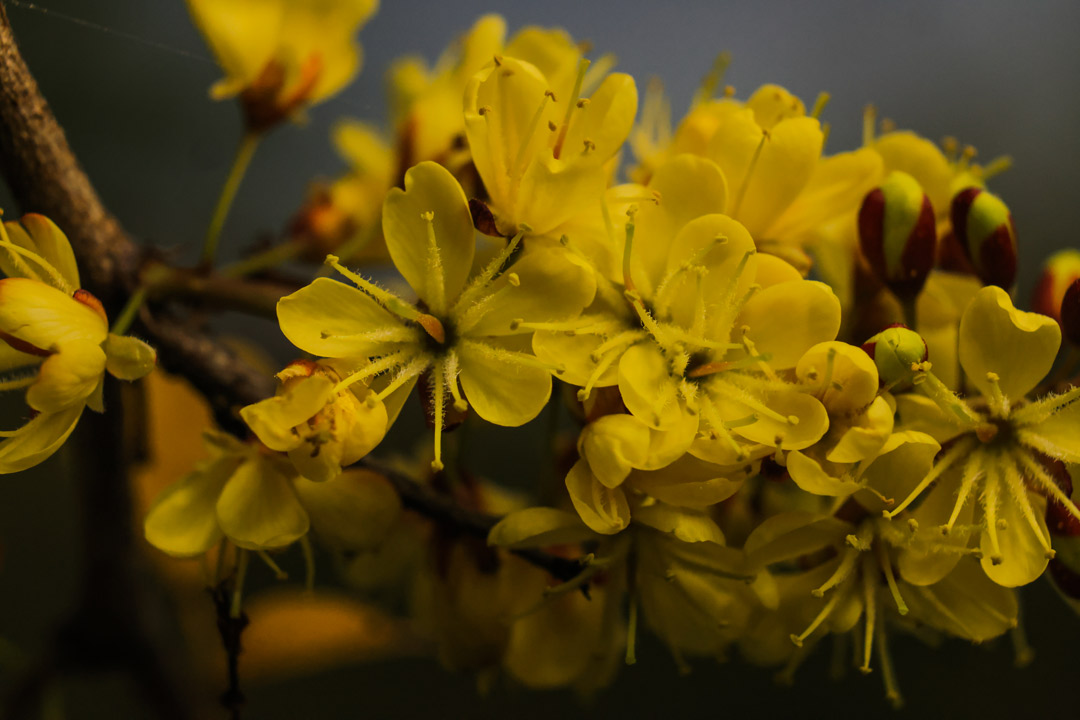 |
Haematoxylum campechianum Palo de Campeche or Palo de Tinto. PNYNN - Río Ixtinto. Photo by Edwin Solares. February 14th |
During the tour we did not find as many flowers as we expected, but it was different from the previous months. On this occasion the weather has been a bit cold and rainy so the River was fuller and wider, we took some pictures with a Drone which allowed us to see that the Río Ixtinto is linked to the Julequito Lagoon in this season.
We saw several birds flying along the river bank like a Kingfisher and two woodpeckers, this was cute and curious on Valentine's Day.
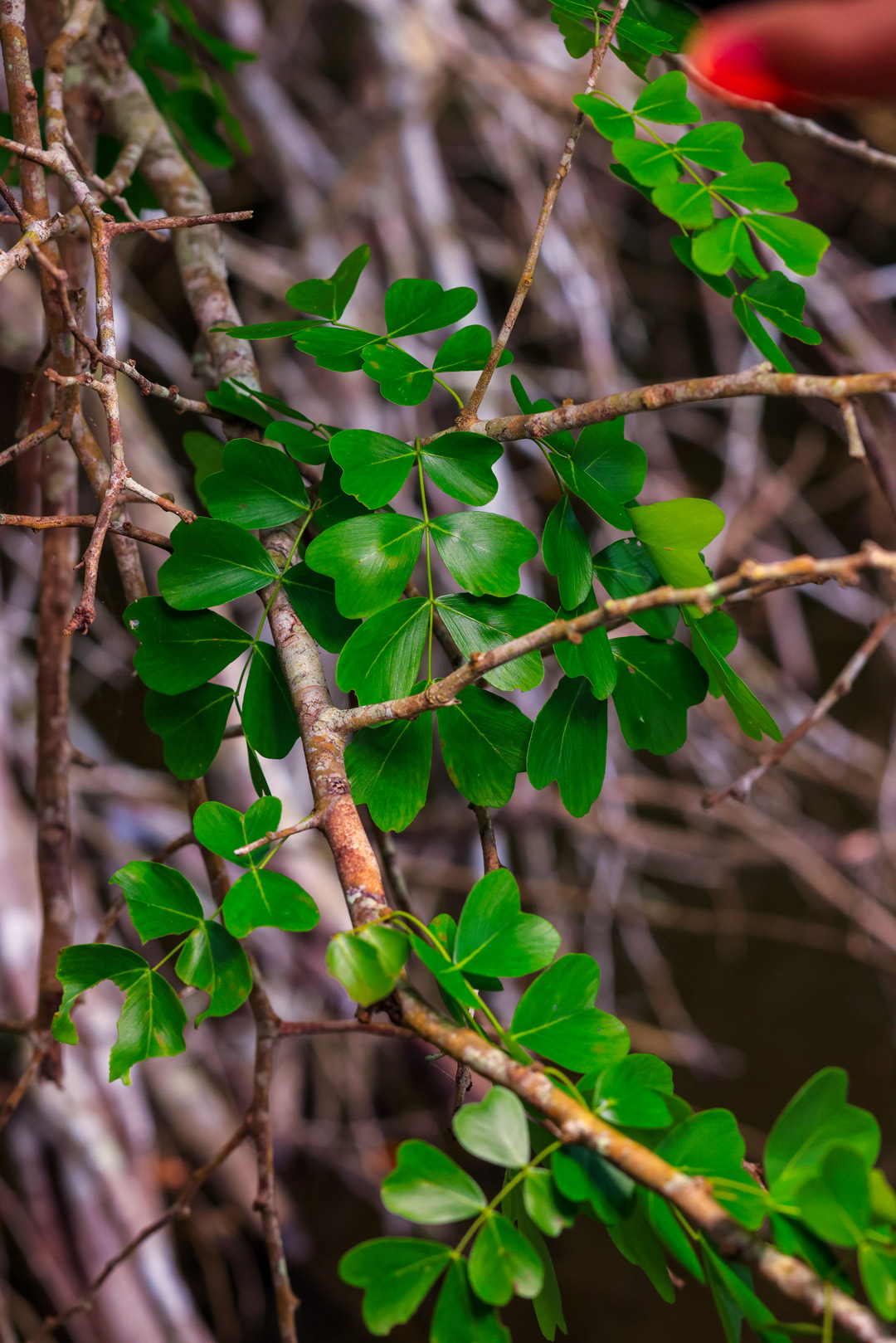 |
Haematoxylum campechianum Palo de Campeche or Palo de Tinto. PNYNN - Río Ixtinto. Photo by Edwin Solares. February 14th |
Written by Vivian Hurtado & Roxana Leal
Identified Species by Victor Mendoza
|
|
Caoba, mahogany, tree fruit pods along Guatemala highway CA-9
Posted November 12, 2021
In October we visited Lagunita Creek for the third time during the Documentation of Livingston, Izabal Project. This time the atmosphere was more humid than the last times we have visited it. Therefore, we find various mushrooms on the trails that we want to show you.
As you drive from Guatemala City towards Rio Dulce (en route to Peten) you will see giant mahogany trees all along the highway in El Progresso and Zacapa areas. The mahogany trees are easiest to recognize from October onward when the giant seed pods are visible.
I have been driving this road since the 1970’s. so am familiar with these beautiful trees and their large seed pods (the size of a large pine cone, but smooth).
This week (November 11, 2021), I kept seeing these pods but they were a white color, not the soft brown color of a mature pad that I was used to. So finally I stopped to take some snapshots. Our telephoto lenses were all packed in the back of the vehicle so I had only an iPhone 13 Pro Max available to take snapshots.
We were en route to Rio Dulce, to stay as guests of the owner of Marina and Hotel El Tortegal, along the Rio Dulce south of the highway bridge.
Swietenia macrophylla King, plant family Meliaceae, mahogany in English, caoba in Spanish.
Árbol Espino de vaca
Posted November 12, 2021
One of our objectives of the October expedition was to photograph the “Espino de Vaca” tree, so we spent one morning walking to the Aldea El Rosario where we could document it.
The next day, in Tapon Creek Reserve, at the edge of the trail we were able to find one again. This tree is important, since it is part of the series of Edible Plants of Wetlands of the Municipality of Livingston, Izabal.
Pithecellobium laceolatum is a species of tree belonging to the FABACEAE family. It lives in tropical and subtropical areas, grows from 0 to 1800 meters above sea level; This species is distributed from the south of the USA, Mexico and Central America. This plant serves to regenerate and improve the quality of the soils because it is associated with other species of the same or other families. It is adapted to survive in climates from very dry to very humid.
Taxonomy:
Kingdom |
Plantae |
Order |
Fabales |
Family |
Fabaceae |
Genus |
Pithecellobium |
Species |
Pithecellobium laceolatum |
Botanical description:
Size |
Reaches up to 15 m in height. |
Cortex |
Its base measures 30 cm or more, it has horizontal marks from which two spines are detached. |
Flowers |
3 to 8 centimeters hermaphroditic, small white to yellow in the shape of spikes. |
Leaves |
Coriaceae, alternate, pinnate (composed of two pairs of leaflets) 5 to 10 cm long and 2 3.5 cm wide. |
Fruits |
Young green pods between 5 to 20 cm and turn an intense red color when ripe. |
Seeds |
Up to 8 seeds per pod that are 1 to 1.5 cm long and 0.8 cm wide Brown. |
Roots |
Pivoting deep and strong. |
References
http://ri.uagro.mx/bitstream/handle/uagro/2143/CP_17445_20.pdf?sequence=1&isAllowed=y
Written by Vivian Hurtado & Roxana Leal
Identified Species by Victor Mendoza
|
|
Mushrooms: amazing organisms
Posted November 12, 2021
In October we visited Lagunita Creek for the third time during the Documentation of Livingston, Izabal Project. This time the atmosphere was more humid than the last times we have visited it. Therefore, we find various mushrooms on the trails that we want to show you.
We invite you to visit Lagunita Creek in Río Sarstún, Izabal to conduct research on flowers and fungi, and you can also do ecotourism.
Fungi have different mutualistic relationships, such as mycorrhizae, which refers to the relationship that exists between fungi and plant roots. On the one side, the roots secrete sugars, amino acids, fatty acids and other organic substances that benefit fungi and, on the other hand, fungi convert the soil minerals and decomposing matter into forms assimilable by the roots of the plant.
There are also endophytic fungi that establish a relationship with the plants where they live within them without causing symptoms. In this case, the fungus is capable of producing bioactive metabolites, as well as modifying the defense mechanisms of its host, allowing and increasing the survival of both organisms.
Fungi classification
Chytridiomycota |
Predominant aquatic fungi, these have flagella and are the most ancestral fungi. |
Glomeromycota |
Fungi that make symbiotic relationships with other organisms such as mycorrhizae. |
Basidiomycota |
They are the most common fungi that we know as mushrooms, they help fix nutrients and degrade organic material in forests. |
Zygomycota |
They inhabit terrestrial foods, a large part of the molds that attack vegetables. |
Ascomycota |
They form lichens, these are associated between fungi with algae, cyanobacteria, yeasts. |
Written by Vivian Hurtado & Roxana Leal
Identified Species by Victor Mendoza
|
|
Exotic blue fruits of Psychotria poeppigiana
Posted November 11, 2021
“Labios de mujer” Psychotria poeppigiana is one of the species that we have best photographed during our October 2021 expedition. In Aldea El Rosario, Tapón Creek, there were places where several flowers and fruits of this species were observed.
Psychotria poeppigiana is a species of plant of the RUBIACEAE family. What we commonly see as the red petals of this plant are actually modified leaves or also called bracts. These turn red due to the carotenoid pigments they contain, as a strategy to attract pollinators. The flowers are actually white in color and clustered in the center. When these are pollinated, blue colored fruits can be observed.
Rubiaceae is a family made up of about 600 genera and more than 1000 species of herbaceous, shrubs, trees, vines, epiphytes, which are distributed and of greater diversity in the tropical belt.
Taxonomy
Kingdom |
Plantae |
Order |
Gestianales |
Family |
Rubiaceae |
Genus |
Psychotria |
Species |
Psychotria poeppigiana |
Written by Vivian Hurtado & Roxana Leal
Identified Species by Victor Mendoza
|
|
Gray mangrove (Conocarpus erectus) in Lagunita Creek
Posted November 11, 2021
In Lagunita Creek area you can find several creeks made by spaces between mangroves, generally you can see a lot of Red Mangrove. It is difficult to navigate in this place, especially if the boat is large and has a roof, like the one we were transporting on this expedition. On this occasion among the Red Mangrove we could see Gray Mangrove, also called Button Mangrove or Buttonwood.
Its fruit is dark red and round. It was important to document this species, since we do not have as many photographs in our digital library.
Conocarpus erectus is a tree highly branched, producing a leafy crown with gray branches and a central stem that can measure up to 1 m in diameter. It is widely distributed in the Antilles, from Mexico throughout the Atlantic and on the Pacific side from northern Mexico to northeastern Peru.
Taxonomy:
Kingdom |
Plantae |
Order |
Myrtales |
Family |
Combretaceae |
Genus |
Conocarpus |
Species |
Conocarpus erectus |
Botanical description:
Leaves |
Lanceolate 3 to 8 cm long by 1 to 3 cm wide. |
Flower / Inflorescence |
In the form of panicles that measure from 5 to 10 cm and flowers organized in balloon-shaped capitula of 2 to 3 cm in diameter with ovate bracts and acuminate apex. |
Fruits |
Flattened with two tiled wings in a structure similar to a 10 to 12 mm brown cone. |
References
Written by Vivian Hurtado & Roxana Leal
Identified Species by Victor Mendoza
|
|
Pheasant’s tail (Anthurium schlechtendalii)
Posted November 10, 2021
On the shore of Laguna Yaxha in front of the museum and camp area you can find a dock that is currently covered by water, on the left side there is a Stone Sheet. During our October expedition we were able to observe its spike. We documented it in the afternoon just at sunset, so the light was very good.
Anthurium schlechtendalii is an herbaceous plant belonging to the ARACEAE family. Its common name is pheasant’s tail, or also known as stone leaf (in Spanish). It is native from Guatemala, Belize, Honduras, Mexico (Yucatan peninsula); Nicaragua, humid places of tropical forests from 0 to 15,000 meters above sea level.
Botanical description:
It is a generally epiphytic plant, or in lesser cases lithophytic or terrestrial. It has a stem 3 to 5 cm in diameter, numerous white fleshy roots. Its leaves are supported by a thick, erect, 8-20 cm long petiole, elliptical obovate with wavy margins. The inflorescence is in the shape of a spadix, very characteristic of the Araceae family, supported by a peduncle 35 to 50 cm long. The flowers are 2 mm arranged in a spiral where only those found in the lower part are hermaphrodites. The fruits are oblong berries 1 to 2 cm long, bright red with two seeds. It is a plant that germinates generally by seeds once it has sufficient conditions and falls on organic material rich in nutrients and humid between 26 and 28 degrees centigrade.
Taxonomy:
Kingdom |
Plantae |
Class |
Monocotiledonea |
Order |
Alismatales |
Family |
Araceae |
Genus |
Anthurium |
Species |
Epidendreae |
Genus |
Anthurium schlechtendalii |
References
www.monaconatureencyclopedia.com/anthurium-schlechtendalii/?lang=es
Written by Vivian Hurtado & Roxana Leal
Identified Species by Victor Mendoza
|
|
Flora documented at the Temple 216 or Temple of the Red Hands at Yaxha National Park
Posted November 9, 2021
In our October expedition we made a walking tour in Yaxha Park, where we documented the flora that was found from the entrance to Temple 216 or Temple of the Red Hands. Right at the entrance we were able to photograph very photogenic white orchids that were attached to a tree.
Prosthechea radiata is an epiphytic and / or lithophytic plant, that means it can live attached to other plants or rocks (it is not parasitic). It is characterized by an intense and pleasant sweet aroma. Belonging to the ORCHIDACEAE family. This is distributed from sea level to 2000 meters above sea level and can be found in Mexico, Guatemala, Belize, El Salvador, Honduras and Nicaragua.
Botanical description:
Glabrous plant measuring 12 to 40 cm in height. The pseudobulbs are ovoid-ellipsoid type, lemon green in color and with 2 or 3 apical leaves to it). The pseudobulbs are 4 and 13 m long and 2 to 3 cm wide. The leaves are linear lingulate to linear lanceolate, leathery, 11 and 35 cm long and 1.2 and 3.2 cm wide. The flowers are pale lemon green color and cream tones, with a marked and characteristic aroma and the lip is marked by parallel purple lines.
Taxonomy:
Kingdom |
Plantae |
Division |
Spermatophyta |
Class |
Monocotyledoneae |
Order |
Microspermae |
Family |
Ochidaceae |
Tribe |
Epidendreae |
Genus |
Prosthechea |
Species |
Prosthechea radiata |
Common names |
Canelita, Garrapatilla, conchitas |
References
Written by Vivian Hurtado & Roxana Leal
Identified Species by Victor Mendoza
|
|
Cuajilote trees in Yaxha, Nakum and Naranjo National Park
Posted November 8, 2021
On the road between Santa Elena and Yaxha in Petén you can find Cuajilote trees (Parmentiera acueleata). On our October expedition, when we were heading to Yaxha, Nakum and Naranjo National Park, we made a stop on the road to photograph this tree.
Its fruit was just ripe, one of them almost fell on us when we were photographing it.
Botanical Description
Greenish cauliflower flowers, stems with thorns at the nodes. Its shape is a medium tree. Its bark is slightly fissured yellowish brown. The leaves are usually opposite with three leaflets or simple. Solitary or grouped flowers 5 to 6 cm long that grow directly from the trunk or at the ends of the branches, in this case the flowers are green with light pink or purple lines. The fruit is a bay of approximately 15 cm x 6 cm usually curved from yellowish to green (Peña & Kanpp, 2011). This plant prefers warm climates, but it can thrive in all types of soil (Red de Viveros de Biodiversidad, n.d.).
Uses
It is a fodder tree, which serves as food for wildlife and shade for pasture and firewood. It has medicinal uses; the aqueous extract of the flower, fruit, bark and root is used to cure kidney stones and asthma and cough discomforts. The root is also used as a diuretic. The wood can be used for carpentry (Red de Viveros de Biodiversidad, n.d.).
Taxonomy
Kingdom |
Plantae |
Division |
Magnoliophyta |
Class |
Magnoliopsida |
Order |
Lamiales |
Family |
Bignionaceae |
Tribe |
Crescentieae |
Genus |
Parmentiera |
Species |
Parmentiera acueleata |
Common names |
Cuajilote, Guajilote, Cacao de mono |
References
- PEÑA, M. and S. KNAPP
- 2011
- Árboles del mundo maya. London, England: Natural History Museum: Pronatura Península de Yucatán: Fundación ProPetén: Universidad del Valle de Guatemala. 263 pages.
- RED DE VIVEROS DE BIODIVERSIDAD
- n.d.
- Cuajilote / Parmentiera acuelata. Ficha técnica.
Available Online:
https://revivemx.org/Fototeca/Arboles/Parmentiera_aculeata/
8_Fichas_de_venta/Cuajilote_v2.pdf
Written by Vivian Hurtado & Roxana Leal
Identified Species by Victor Mendoza
Parque Nacional Yaxha, Nakum and Naranjo
Carnivorous Plants
Plants of Municipio de Livingston, Izabal
- Acrostichum danaeifolium, giant leather ferns
- Bellucia Pentamera
- Bibliography on Grias cauliflora
- Bibliography on Licania platypus
- Bibliography on Mangle negro (Avicennia germinans) L.
- Bibliography on Montriacardia arborescens
- Bibliography on Typha domingensis and Thypha latifolia
- Conocarpus erectus, white mangrove
- Edible Wetlands Plants, Hotel Tortugal
- Heliconia latispatha
- Heliconia wagneriana
- Manicaria saccifera Confra palm
- Neotropical trees of Guatemala need protection
- Nymphoides indica, waterlily flowers
- Pachira aquatica, zapoton
- Bibliography on Pithecellobium Mart., Neotropical trees of Mesoamerica
Ecosystems, Wetlands Aquatic Plants
Smartphone Camera Reviews
Bushes and small trees
Fungi and Lichens
Orchids
- Bibliography Bletia purpurea, aquatic orchid
- Bibliography, Epidendrum radicans
- Bibliography on Habenaria Orchids from Yaxha
- Bibliography, Lycaste virginalis var. alba.
- Bibliography, Macroclinium bicolor
- Bibliography, Prosthechea cochleata
- Bibliography Sobralia macrantha, Lirio de San Juan
- Bibliography, Sobralia xantholeuca
- Bibliography on Terrestrial shade orchids from Guatemala
- Bibliography on Terrestrial sunny orchids from Guatemala
Botanical Terms
Maya and Aztec flavorings for cacao, cocoa, chocolate
- Achiote, Bixa orellana
- Bibliography on Achiote, Bixa orellana
- Bibliography on Esquisúchil, Bourreria huanita
- Bourreria huanita
- Cassia grandis, bucut
- Chile Chocolate
- Chile Chocolate (Capsicum annuum var accuminatum)
- Chiranthodendron pentadactylon
- Cymbopetalum penduliflorum
- Guazuma ulmifolia
- Haematoxylum brasiletto
- Piper auritum, hoja santa
- Piper species
- Quararibea funebris
- Sterculia apetala, castaño
- Tagetes sp., Marigold
- Talauma, a variant of Magnolia
- Vanilla orchid
- Virola and nutmeg
Cacao, cocoa, chocolate
Consulting cacao & Theobroma species
Tobacco Ingredients of Aztec & Maya
Trees of Mesoamerica
- Bibliography on Acacia dolichostachya, Wild tamarind
- Bibliography, Bellucia costaricensis
- Bibliography, Bucida buceras
- Bibliography on Coccoloba belizensis Standl.
- Bibliography on Cojoba sp. and Cojoba arborea
- Bibliography, Ficus.
- Bibliography on Haematoxylum campechianum and H. brasiletto
- Bibliography on Hibiscus pernambucensis
- Bibliography on Ipomea murucoides
- Bibliography on Lacmellea standleyi, lechemiel
- Bibliography on Leucaena leucocephala
- Bibliography on mangle rojo (Rhizophora mangle)
- Bibliography on Manzanillo, Alseis yucatanensis Standl.
- Bibliography on Matilisguate, Tabebuia rosea
- Mangrove swamp Trees
- Bibliography on Ruagea insignis
- Bibliography on Pterocarpus officinalis
Bombacaceae, Bombacoideae
Tropical Fruits of the Maya
- Avocado Hass
- Bibliography on Coloc, Talisia floresii
- Bibliography, Dichogamy of avocado species
- Bibliography on Guayo, Talisia olivaeformis
- Bibliography on Laetia thamnia, Bakelac
- Bibliography on Maracuyá, Passiflora quadrangularis L.
- Bibliography on Punica granatum L., Granada
- Cashew
- Cuajilote, Parmentiera aculeata
- Granada
- Guanabas and Annonas
- Guava, Guayaba, Psidium guajava L
- Introduction to Papaya
- Nance a fruit of prehispanic Guatemala
- Passion flowers and fruits
- Passion flower, giant fruit
- Talisia floresii, Sapindaceae
- Carica Papaya Bibliography
Tropical Nuts
Spices, condiments, food coloring
Medicinal Plants
- Aristolochia, The largest flower in Guatemala, Bibliography
- Asclepias curassavica, bibliography
- Bibliography on Ciricote, Cordia dodecandra
- Bibliography on Contrahierba, Dorstenia contrajerva
- Bibliography on Falso hibisco, Malvaviscus arboreus
- Bibliography on Huele de noche, Cestrum nocturnum
- Bibliography on Lirio araña, Hymenocallis littoralis
- Bibliography on Roble Prieto, Ehretia tinifolia
- Bibliography, Tithonia diversifolia
- Canak
- Calliandra general info
- Guava, Guayaba
- Magnolia and Taluma
- Mayan medicinal plants
- Piper
- Tecomasuche, Coclospermum vitifolium
- Bibliography on Sufricay, Malmea depressa
- Bibliography on Wigandia urens
Underutilized edible plants
Edible Plants of the Mayan World
- Acacia, subin, bullhorn acacia
- Bibliography, Annona muricata
- Bibliography, Annona purpurea
- Bibliography, Annona reticulata
- Bibliography on Chipilín, Crotalaria longirostrata
- Bibliography on Chirimoya, Annona squamosa
- Bernoullia flammea
- Canna indica, tamale wrap
- Cuchamper, Gonolobus
- Guava, Guayaba
- Bibliography, Gonobolus sp.
- Bibliography, Parmentiera aculeata
- Pacaya palm Chamaedorea tepejilote
- Split leaf philodendron, Monstera deliciosa
Plants and trees used to produce incense
Utilitarian Plants
- Bibliography, Acacia farnesiana
- Bibliography on Aechmea bromeliifolia
- Bibliography on Agave americana
- Bibliography, native Agave species from Guatemala
- Bibliography on Anthurium crassinervium (Jacq.) Schott
- Bibliography on Balsa, Ochroma pyramidale
- Bibliography on Bamboo, Guadua longifolia (E.Fourn) R.W.Pohl
- Bibliography, Crescentia alata
- Bibliography, Crescentia cujete
- Bibliography on Hule, Castilla elastica
- Blepharidium guatemalense, irayol blanco
- Crescentia alata, Crescentia cujete
- Tecomasuche, Coclospermum vitifolium
- Bibliography on Coxte, Colubrina arborescens
- Bibliography on Madre cacao, Gliricidia sepium
- Bibliography on Tillandsia usneoides
Flowers, edible
Camera Reviews for Photographing Flowers and Plants
Toxic plants
Trees with conical Spines
Flowers native to Guatemala visible now around the world
SUBJECTS TO BE COVERED DURING NEXT 6 MONTHS
Grains
Fruits (typical misnomer mishmash of Spanish language)
Other Fruits (primarily fruits from trees)
Fruits (vines or cacti)
Flavoring, herbs, and spices
Flowers, sacred
Plants which are sacred
Plants mentioned in myths
plants to produce Alcohol
Plants used for drugs
Plants or trees that are used to produce incense
Most common introduced plants (not native)
Glossaries

















